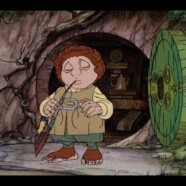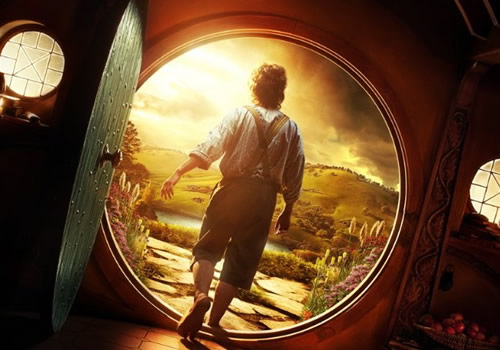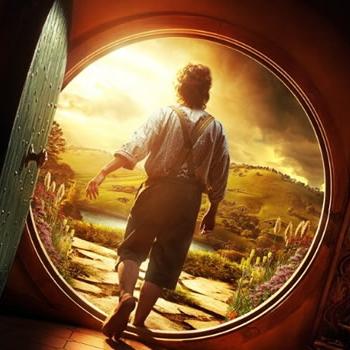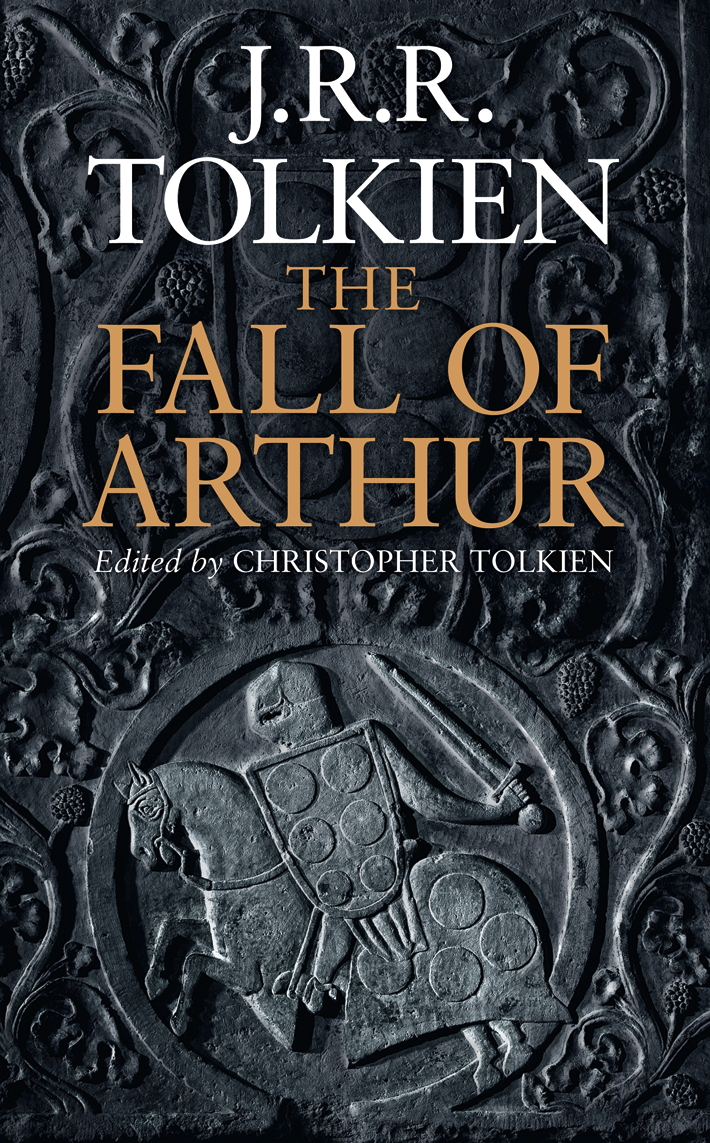Review: The Hobbit (1977)
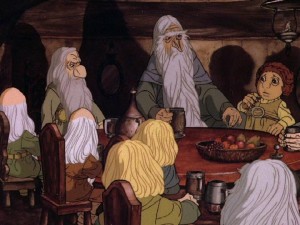 With the impending arrival of Peter Jackson’s The Hobbit: An Unexpected Party, I couldn’t resist taking a trip back in time to watch (yet again) the 1977 Rankin Bass version of The Hobbit.  I first discovered this movie when it was shown to my class back in elementary school some 30 years ago, and it was one that we ended up watching every year due to its popularity with the students.  For someone who had been raised on Looney Tunes, The Pink Panther, Tom and Jerry, and Walt Disney Classics, and in the years before Transformers or G.I. Joe stormed the mid-80s, this was a very different kind of cartoon.  I fell in love with it the first time through, which prompted me to read the J.R.R. Tolkien classic.  I convinced my mom to purchase for me that very afternoon and began reading within the hour.  I remember it like it was yesterday.  That was the day I graduated to novels, and it was the day I first embraced my lifelong addition to Professor Tolkien’s works.  I guess you could say I’m a bit biased.  I still have that beat up old paperback, sitting on the shelf with the leather bound slipcase version and the rest of my Tolkien collection.
With the impending arrival of Peter Jackson’s The Hobbit: An Unexpected Party, I couldn’t resist taking a trip back in time to watch (yet again) the 1977 Rankin Bass version of The Hobbit.  I first discovered this movie when it was shown to my class back in elementary school some 30 years ago, and it was one that we ended up watching every year due to its popularity with the students.  For someone who had been raised on Looney Tunes, The Pink Panther, Tom and Jerry, and Walt Disney Classics, and in the years before Transformers or G.I. Joe stormed the mid-80s, this was a very different kind of cartoon.  I fell in love with it the first time through, which prompted me to read the J.R.R. Tolkien classic.  I convinced my mom to purchase for me that very afternoon and began reading within the hour.  I remember it like it was yesterday.  That was the day I graduated to novels, and it was the day I first embraced my lifelong addition to Professor Tolkien’s works.  I guess you could say I’m a bit biased.  I still have that beat up old paperback, sitting on the shelf with the leather bound slipcase version and the rest of my Tolkien collection.
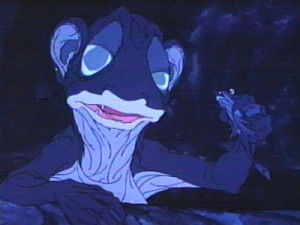 By now, thanks to the hype of the new film, I think most everyone knows the story even if they’ve never read the book.  Gandalf drops in on Bilbo Baggins, enlisting him into a company of dwarves as a burglar.  Their mission: to liberate the treasure stolen over the years from the great dragon Smaug.  The adventure takes them to cross paths with trolls, goblins, elves, eagles, spiders, humans, and of course Gollum, culminating in the face-off against Smaug, which directly leads to the War of Five Armies.  It’s the story that began the era of modern fantasy and gave rise to the world of Middle Earth.
By now, thanks to the hype of the new film, I think most everyone knows the story even if they’ve never read the book.  Gandalf drops in on Bilbo Baggins, enlisting him into a company of dwarves as a burglar.  Their mission: to liberate the treasure stolen over the years from the great dragon Smaug.  The adventure takes them to cross paths with trolls, goblins, elves, eagles, spiders, humans, and of course Gollum, culminating in the face-off against Smaug, which directly leads to the War of Five Armies.  It’s the story that began the era of modern fantasy and gave rise to the world of Middle Earth.
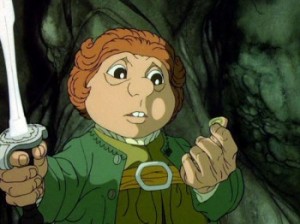 It’s been a few years since I last watched this version.  It’s one that the first thing one might think upon seeing it is, “they just don’t make ’em like this anymore.”  It never ceases to astound me to this day how “old” this movie feels.  The thing is, this isn’t due to its age or the time it was created.  This movie has always felt older than time to me, which in a bizarre way lends to the ambiance of the story itself, as though it passed to us through the ages as Tolkien intended.  There’s a certain timeless yet antiqued quality about most things that have come out of the Rankin Bass studios, and The Hobbit very much fits that mold for me.  To say that the animation is a bit rough around the edges is to not give this movie its full credit.  The animation is limited, yes, and it even comes across at times as somewhat primitive by a lot of standards, but the drawing style is so incredibly lush and detailed that it brings Middle Earth to life even when the animation itself does not.  As a bonus, many of the visuals used in the illustrated versions of the original novel are here.  We see the map of Middle Earth as well as Bilbo’s hobbit hole and the moon map just as they are depicted in the novel.  With the exception of the song “The Greatest Adventure,” all of the songs in the movie are actually taken from the book, some of them tweaked here and there as the production saw fit.  As to the story itself, it hits most of the scenes in the novel and certainly all of the high points.  It might feel a bit like reading the book in fast forward, except that the book is a quick read as well.
It’s been a few years since I last watched this version.  It’s one that the first thing one might think upon seeing it is, “they just don’t make ’em like this anymore.”  It never ceases to astound me to this day how “old” this movie feels.  The thing is, this isn’t due to its age or the time it was created.  This movie has always felt older than time to me, which in a bizarre way lends to the ambiance of the story itself, as though it passed to us through the ages as Tolkien intended.  There’s a certain timeless yet antiqued quality about most things that have come out of the Rankin Bass studios, and The Hobbit very much fits that mold for me.  To say that the animation is a bit rough around the edges is to not give this movie its full credit.  The animation is limited, yes, and it even comes across at times as somewhat primitive by a lot of standards, but the drawing style is so incredibly lush and detailed that it brings Middle Earth to life even when the animation itself does not.  As a bonus, many of the visuals used in the illustrated versions of the original novel are here.  We see the map of Middle Earth as well as Bilbo’s hobbit hole and the moon map just as they are depicted in the novel.  With the exception of the song “The Greatest Adventure,” all of the songs in the movie are actually taken from the book, some of them tweaked here and there as the production saw fit.  As to the story itself, it hits most of the scenes in the novel and certainly all of the high points.  It might feel a bit like reading the book in fast forward, except that the book is a quick read as well.
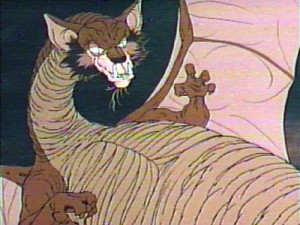 For anyone who has a fascination with Middle Earth and hasn’t seen this, it’s a definite must-see, both as a testament to an era when Middle Earth was otherwise “unfilmable” and as a curiosity in the annals of animation history.  It’s one of those weird happenstances where trying to explain it to those who don’t know is difficult, but to those who have seen it, no explanation is necessary.  If nothing else, it’s a lot of fun to compare what’s here to some of the imagery we’ve seen from the upcoming movie and speculate on what else is to come.  It’s a good time to be a fan, and this animated classic is pure fan gold.
For anyone who has a fascination with Middle Earth and hasn’t seen this, it’s a definite must-see, both as a testament to an era when Middle Earth was otherwise “unfilmable” and as a curiosity in the annals of animation history.  It’s one of those weird happenstances where trying to explain it to those who don’t know is difficult, but to those who have seen it, no explanation is necessary.  If nothing else, it’s a lot of fun to compare what’s here to some of the imagery we’ve seen from the upcoming movie and speculate on what else is to come.  It’s a good time to be a fan, and this animated classic is pure fan gold.

